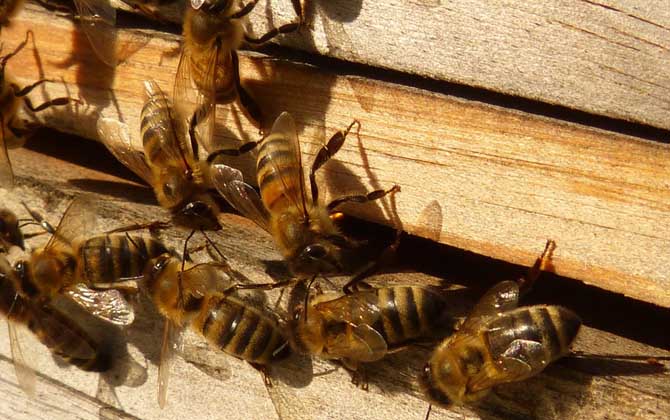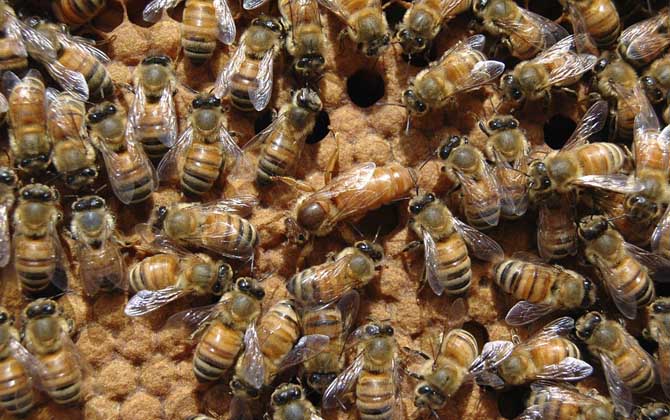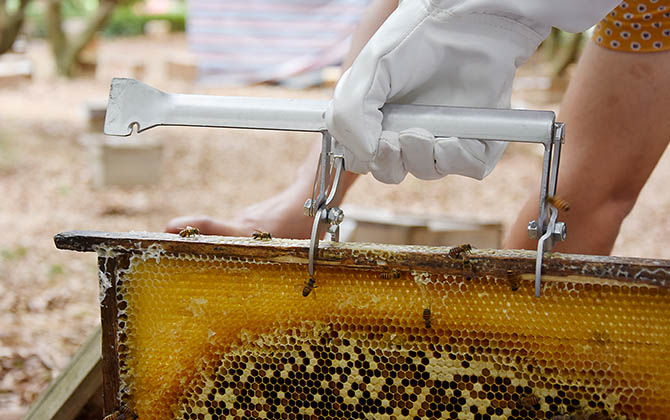Beekeeping knowledge and technology
 May 26,2022
May 26,2022

 Lucia Ma
Lucia Ma
Habits of bees
1. Sociality: Bees are typical social insects. The entire colony consists of a queen bee, a small number of drone bees and a large number of worker bees. The queen bee is mainly responsible for laying eggs to nurture new bees, the drone is mainly responsible for mating with the new queen bee, and the worker bees are responsible for mating with the new queen bee. Undertake almost all the work in the group.
2. Nesting: Bees are typical nesting insects. In fact, the bee colony is inseparable from the hive whether it is feeding larvae or storing food, and the hive is built by the worker bees with the beeswax secreted by the abdominal wax glands. Honeybees have almost strict requirements on the nesting environment.
3. Sociality: Honeybees are typical gregarious insects, but except for drones, the colony does not communicate with the colony, and the bee colony relies on its unique "swarm smell" to distinguish similarities and differences. It can pass freely in the hive, but if the group tastes different, it will be a big shot.
4. Food storage: Bees are typical food storage insects. When the nectar source is abundant, worker bees will collect a large amount of pollen and nectar and store them in the hive (honey is brewed by bees with nectar). If the external nectar source is lacking or the weather is not suitable for worker bees to collect When the bee colony will live on the stored food.

Beekeeping site
1. Abundant nectar sources: The survival and reproduction of bees are inseparable from the support of nectar sources. If there is a shortage of nectar sources nearby, the bees will even have a problem with their own survival, let alone beekeeping to obtain honey and pollen. Therefore, beekeeping sites must be Choose a place with abundant and relatively continuous sources of nectar.
2. Suitable climate: Although bees have a certain ability to adjust the climate, raising bees in a place with a suitable microclimate is more conducive to the development of the bee colony. For example, when the temperature is not suitable, the colony will increase the burden in order to regulate the temperature, so the beekeeping site must be selected. A place with a suitable microclimate.
3. Quiet environment: Bees can develop stably in a quiet environment. In noisy places, the bee colony cannot quietly breed insects and gather flowers to make honey. If the bee colony is seriously disturbed, it may even abandon the nest and escape. Therefore, the beekeeping site must be Choose a place that is remote and rarely disturbed by humans and animals.
4. Fewer predators: Bees have many natural enemies in nature, such as wasps, spiders, frogs, etc. that will hunt and kill bees, especially wasps are the greatest threat to bees, especially in summer and autumn. The venue must choose a place with few enemies.

1. Beehives: The function of beehives is to provide a place for bee colonies to thrive. It is mainly divided into two categories: traditional beehives and live-frame beehives. Traditional beehives include barrel beehives, lattice beehives, etc., while live-frame beehives have Ten-frame beehives, Dadan beehives, twelve-frame square beehives, etc.
2. Bee foundation: The nest foundation is the artificially manufactured honeycomb foundation, mainly including wax nest foundation and plastic nest foundation. At present, beekeepers mainly use wax nest foundation. The size of the house eyes is also different, so be sure to choose a nest foundation corresponding to the bee species when keeping bees.
3. Beekeeper Protection Gear: Beekeeper Protection Gear is a protective tool for beekeepers when managing bee colonies. The main function is to prevent beekeepers from being stung by bees.
4. Others: The role of beekeeping tools is to improve the efficiency of beekeeping. For example, the honey extractor can quickly separate honey from the comb, and the bee brush can clean the bees attached to the comb. In addition, beekeeping tools There are also bee feeders, scrapers, Queen Excluders, queen cages, and so on.

Beekeeping Management Techniques
1. Feeding: Feeding is a key technology that beekeepers must master, which can be divided into subsidy feeding and reward feeding. Among them, subsidy feeding is to supplement the food necessary for the survival of the bee colony, while reward feeding It is used to stimulate the queen bee to lay eggs and to stimulate the worker bees to nurse their larvae.
2. Bee division: Bee division is the main way to expand the number of bee populations, which can be divided into natural bee division and artificial bee division. Among them, natural bee division means that the bee colony is divided into bees and then harvested, and artificial bee division. Separation is the artificial division of the bee colony before the bee colony is naturally divided.
3. Combined group: Combined group refers to the combination of two or more groups into one group. For example, when the bee colony is too weak and has no value as a separate group, it can be combined into other bee colonies. Multiple weak groups can be merged into a production group with stronger group potential.
4. Queen breeding: The queen bee is the core and most indispensable member of the bee colony. In fact, the development speed of the bee colony depends to a large extent on the quality of the queen bee. The purpose of breeding the queen is to obtain a large number of high-quality queen bees. Bee farms generally target the breeding of high-quality queen bees.
5. King introduction: King introduction refers to the re-intervention of a new queen bee for the colony. For example, after the bee colony loses the queen, a new queen bee must be intervened in time to continue the colony, otherwise the colony may gradually die out due to the lack of a queen bee for a long time. When the old, the weak, the sick, the queen bee, the king bee technique should also be used.
6. Disease prevention: Bee disease control has always been the highlight of bee farming. Once the outbreak of a mild disease affects the normal development of the bee colony, it may even cause a large number of bees to die in the whole field. Therefore, beekeepers are required to understand the common diseases and insect pests of bees. symptoms and control methods.




 Tel:
Tel:

 Home
Home Beekeeper ideas
Beekeeper ideas  You May Also Like
You May Also Like







 Tel
Tel
 Email
Email
 Address
Address







